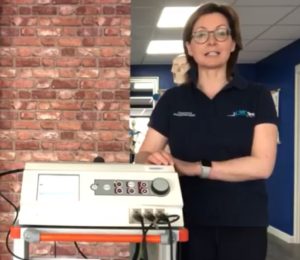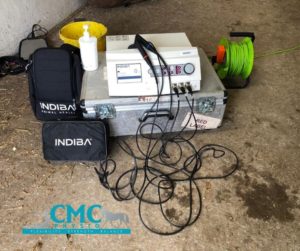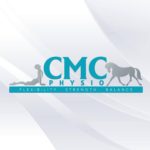Interview with Clare-Maria Campbell
Published:24 June,2021
Clare-Maria Campbell, the Official Physiotherapist to the HSI High Performance Eventing Squad and Chartered Physiotherapy specialising in Equine Physiotherapy and Rider Assessment, granted us a lovely interview where she told us about, not only her experience with INDIBA, but also her experience as a dual physiotherapist. Curious about it?
When was the first time you heard about INDIBA?
A fellow colleague casually mentioned it to me a couple of years ago but to be honest, I thought it was very expensive and I didn’t really think much more about it! I then received an email shot about the webinars during the first lockdown in 2020. Listening to the speakers, in particular Prof Tim Watson, and how supportive he was of the device made me want to know more!Which are your most common treatments with INDIBA?
To be honest, it is the treatment of choice in so many cases! In the human field, I have had great success with back and hip pain, neck and shoulder pain, tennis elbow, arthritic hands, and OA knees. My dad has particularly bad OA knees and it honestly has been a game-changer for him!In the equine world, I use it routinely for back and sacroiliac treatments with excellent feedback regarding enhanced performance. I also love treating horses who tend to get tight through their neck and shoulders with INDIBA. By having the base plate at the girth area and using the electrode in front of the shoulder blade, I feel it gives you the best chance of affecting those self-carriage muscles under the shoulder blade which are otherwise inaccessible. Hear it from her!
Hear it from her! Would you share your most memorable case?
When I first got the device I had a pretty desperate case study lined up to test it out. The patient was a lovely dressage horse with a 7-month-old nasty check ligament injury whose prognosis was very poor. I took him into my yard for a 2-week course and he was rescanned on the 3rd week. He arrived with a very prominent ‘egg’ shape at the site of his check ligament but after 3 treatments this was visibly remodeling – in fact, I remember sending a photo to the vet saying that “I hope this was going to look as good on the inside as it is starting to look on the outside!”. Sure enough, when he was scanned the images were vastly improved, now obviously the fibers had to become more organised and strong, but in 2 weeks we went from a horse that was going to be retired to not only a much sounder horse but also one that was healing. Due to owner circumstances, he has not returned to work yet but he is still sound in the field and will be brought back into work when circumstances allow.As a dual-qualified physiotherapist, you not only work with humans but also a lot of elite horse trainers who are usually very skeptical about technology and new treatments. How did you manage the introduction of INDIBA with them?
That was easy! When I had the device on trial I offered my clients INDIBA treatments at no extra cost. The results spoke for themselves! Regularly clients who have had the treatment for their horses often book themselves or their mum/dad in for the treatment within the week (honestly!). On occasion, it may be the other way around but I find more often the horse comes first!!What are the main benefits you see with your clients after using INDIBA?
From a symptomatic point of view – decreased pain and increased range of movement are obvious. From a holistic point of view it doesn’t just treat for example knee pain or ‘kissing spines’, but rather it treats the condition as well as all the muscles around the structure(s) that are involved in supporting and/or moving it – giving it the best opportunity to become functional again although this obviously needs to be accompanied with an appropriate rehab plan. In human cases, I love the fact that we can treat the person in standing while they perform a functional task thus encouraging normal movement patterns as opposed to compensatory ones. Many other treatments only treat one specific area; e.g. the proximal suspensory in the horse, but with INDIBA the radiofrequency travels right down through the hock or carpus as well, treating the joint which may not necessarily be the main culprit but by having more fluent motion there it may well allow a better outcome on the targeted structure too.It is such a pleasant treatment to receive – you can tell that the horses absolutely love the treatment by how relaxed they are during it but it’s the actual disbelief or almost giddiness that you see in the human patients as they get off the treatment couch and realise that they have regained freedom of movement along with obvious pain relief – it’s just brilliant!
Your favourite moment related to working with horses and humans of your career to date?
September 2018 when Team Ireland Eventers won Team & Individual Silver Medals at WEG in Tryon, NC. I was very fortunate to join the fantastic Support Team for the squad as physio for the riders earlier that year. It was incredible to be part of it all!Disclaimer: All images and videos included in this article are property of Clare-Marie Campbell.
Want to try INDIBA?
Contact a Product expert Connect with Clare-Marie Campbell:
Connect with Clare-Marie Campbell:
Website: cmcphysiotherapy.comInstagram: @cmcphysioFacebook: CMC Physio Related content:
Radiofrequency therapy – Trainer Magazine
Treatments – Rehabilitation and recoveryTreatments – Injury prevention